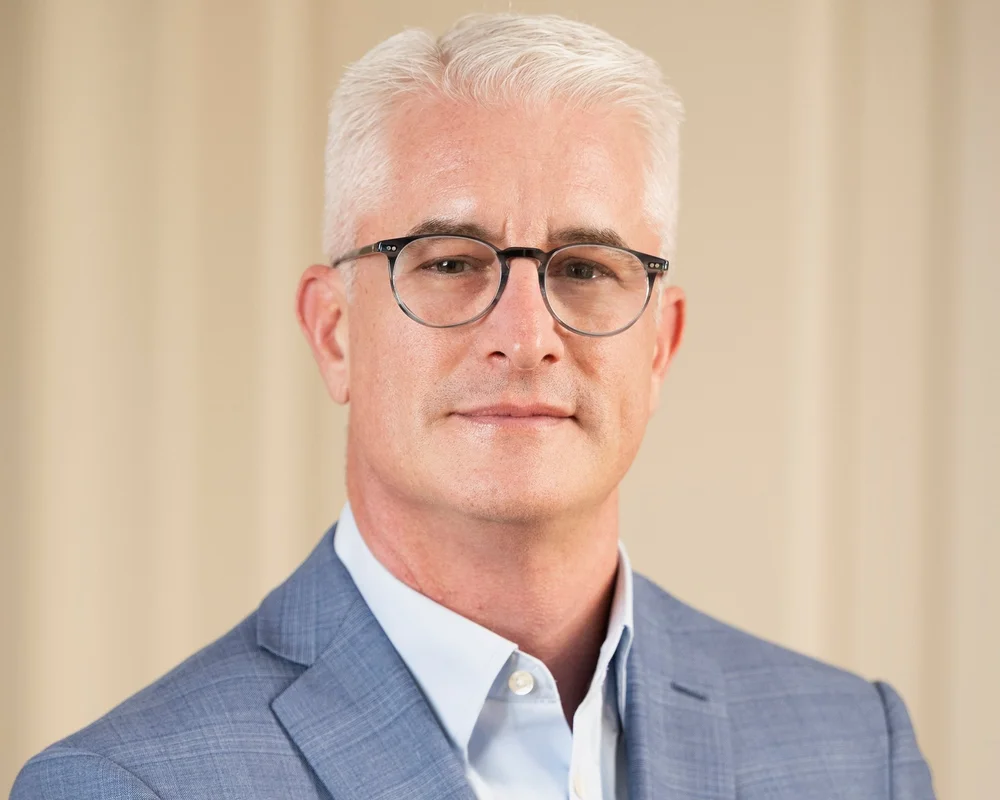 SD-WAN has been rising quickly with enterprises, displacing older technologies, and becoming the most visible manifestation of the software-defined revolution that continues to change networking. But the changes don’t end with SD-WAN and some other ways to leverage SDN are already in the market. One such player is Dispersive Networks, which takes a different approach to securing enterprise connectivity. Joining us today to talk about the company’s approach is CEO, Ed Wood. Ed joined Dispersive Networks in October of last year after 23 years over at Accenture.
SD-WAN has been rising quickly with enterprises, displacing older technologies, and becoming the most visible manifestation of the software-defined revolution that continues to change networking. But the changes don’t end with SD-WAN and some other ways to leverage SDN are already in the market. One such player is Dispersive Networks, which takes a different approach to securing enterprise connectivity. Joining us today to talk about the company’s approach is CEO, Ed Wood. Ed joined Dispersive Networks in October of last year after 23 years over at Accenture.
TR: How did Dispersive Networks get started, and how did you get involved?
EW: The company was founded in 2010, but many of the foundational patents for the technology date back to 2007-2008 when Russia attacked the country of Georgia and disrupted its telecommunication services. That prompted a DARPA initiative on how to address man-in-the-middle attacks and such nation-state attacks on networks generally. The founder was a wireless guy, and he pursued the concepts of radio frequency spread-spectrum, taking traffic and breaking it apart and spreading it across different spectrums and later reconstructing it to avoid interception. Our technology goes beyond wireless, but it’s that underlying idea. I was introduced to Dispersive through a friend of mine who is an investor. It is a very research and engineering-centric company, and it took a little bit of time to get my head wrapped around it before the light bulb went off and I really understood the disruptive nature of the technology and what could be done with it. When the board asked if I’d be interested in becoming the CEO, it was a no-brainer.
TR: How does what you do differ from current SD-WAN technologies?
EW: I think a lot of the SD-WAN market was born out of the telco world, e.g., let’s take this Cisco router code, virtualize it and port it over to a server. However, Dispersive was built from the ground up with a different purpose as lightweight, ultra-secure edge software taking advantage of all available bandwidth and network whether it’s cloud or private. A traditional SD-WAN solution uses a VPN for internet security, a single-session IPsec tunnel typically running from one endpoint to another. The way that Dispersive works is that from any endpoint, whether that be a uCPE, mobile device, laptop, cloud application, IoT, or Raspberry Pi server, it will take a session, and break it into individual encrypted frames that are sent down different pathways. Each of those frames is encrypted with a different public/private key that is sent to what’s called a Deflect. A Deflect is effectively a waypoint or a virtual router that will take that packet frame and send it to its final destination to be reconstructed on the other end. The result is a very resilient, secure, high performing virtual network. It’s a pure overlay over any form of access.
TR: What makes this method superior to other approaches?
EW: If there’s an attempt to intercept, or a man-in-the-middle attack, the virtual network can identify the anomaly, and it will roll the traffic to a different path. If there is a degradation of network services on an underlying network, e.g., from a BGP or DoS attack, it will find a new pathway. The platform truly allows us to eliminate the need for legacy VPN technologies in favor of a highly dynamic solution that can adapt to the underlying conditions and achieve a better quality of service that is as secure as, if not more secure than, a private network. In effect, it’s an MPLS alternative using internet services.
From a performance perspective, it is multipath, and it can use UDP acceleration. For example, while I was still with Accenture when we were moving traffic from San Francisco to New York, we could improve throughput by about 250% using Dispersive Virtual Network (DVN) over a single session VPN, and from New York to India throughput improved up to 350%. The ability to have a common security fabric using internet resources over a diverse set of IP devices creates an incredible platform for enabling the digital transformation of any customer.
TR: What types of customers and applications do you focus on?
EW: Our focus has been on critical infrastructure because we feel that there are a lot of different SD-WAN technologies out in the market, and they all pretty much do the same thing: hybrid networks using MPLS for critical communications and SD-WAN VPNs for everything else. But the market is beginning to see that MPLS is not as private as they thought and VPNs are getting hacked. The Critical Infrastructure Risk and Security Teams are now rejecting traditional choices and seeking something more secure. We’re going after those critical communications because we think that’s an underserved market with a lot of opportunities. We support the energy/power vertical, securing data communications for grid operators; financial services, including TD Ameritrade; and were deployed in the government space as well.
TR: What kinds of customers are you finding traction with, and how is your solution delivered when you do?
EW: We are focused on enabling service providers because they have had a substantial channel as well as a cost-effective and resilient infrastructure and partners. We are very close to closing a deal with a global service provider where they would deploy our cloud elements into their data centers and also in the public cloud since we are multi-cloud. Once this service provider channel is enabled, enterprises can buy and deploy Dispersive solutions on a global scale like any other managed SD-WAN solution. But they’ll see it’s faster, more secure and easier to deploy than all the other choices.
We are partners with ADVA, and we have done all the interoperability testing with the universal CPEs where we run as a VNF. We can also deploy as a container, e.g., Docker, or on a mobile device through an app store. But the future of the industry is moving towards universal CPE for the enterprise because that gives the service provider and the enterprise flexibility for being able to programmatically push multiple VNFs and service chains.
TR: What are the components of your architecture, and how do they fit together?
EW: At the enterprise side we have the gateway Edge software, or public connect software for mobile devices and laptops. At the cloud side, we have an orchestrator, which spins up different elements of the architecture and includes an open API so it can be integrated into whatever orchestration platform a service provider may be using. Also in the cloud are controllers, and the deflects, which govern how traffic is handled between the endpoints. The revenue model for us depends on how the service providers want to sell, but generally, there’s a cloud element that comes from the service provider, and there’s edge revenue which is a monthly recurring charge from what is effectively a SaaS solution. That revenue comes to us from the enterprise through the service provider, since we sell only to the service provider itself.
TR: What enhancements do you have planned going forward?
EW: We were carrier-grade-ready about a year ago with our 3.6.11 release. We’re now in 4.0 and have the scalability ready for large and small enterprise deployments. One area that’s important for us is to look at how to shift from algorithmic decisions based on underlying network conditions at a given time to more predictive and automated intelligence by leveraging things like machine learning. We will also be continuing to drive interoperability with orchestrators and other universal CPEs. A big part of our push this year is going to be around our ecosystem, working with various providers and embedded device manufacturers to get our software embedded with and into those devices, do all the interoperability required for that, and take those combined solutions to market. We are working with some partners in the energy space that focus on embedded smart meters and EMSs. I think within each industry vertical, there’s a set of partners that will be really important to work with and drive that interoperability.
TR: Where do you draw your software talent from?
EW: We are based in Alpharetta, and the core of our company came from Atlanta. We spend our time at places like the Atlanta Tech Village, Georgia Tech, and with other startups in our community not only from a visibility and community perspective but also as a way of identifying new talent. We have folks in DC, San Francisco, New York, Virginia, and Florida, but I think our biggest presence will always be in Atlanta and we’ve got a great talent pool that we’ll continue to develop. Atlanta has become a hotbed for technology, especially on the east coast. A lot of those kids coming out of Georgia Tech and Vanderbilt aren’t graduating and going out to Silicon Valley anymore. I think we have four or five incubators just in greater Atlanta. So there’s plenty of talent right in our own backyard.
TR: Where do you think SD-WAN goes from here?
EW: For service providers to be relevant in this digital age, they have to go beyond just selling SD WAN connectivity and do more solution selling. I think SD-WAN has commoditized the market, so there might be a lot of revenue, but it impacts service provider revenue and profitability. Customers are trying to transform their organizations. They’re trying to introduce IoT; they’re trying to integrate their partners. They have to find different solutions to solve these various problems. So I see a tremendous opportunity for service providers to be more vertically focused and to think about the partners and the marketplace and how to bring IoT, cloud, security, traditional networking, and branches aggregated across a bunch of locations on different networks together. It’s in the early days, but I think there’s a lot of market in the solution versus just the connections.
SD-WAN is very much just a stepping stone. I think that SD-WAN will continue to move more to the cloud and the edge. I believe that IoT is a critical area that needs to be addressed, and we will undoubtedly see more of that. But if you want enterprises to adopt the internet for mission-critical communications, you must have higher performing security for edge to cloud, and so I think that there’s going to be a lot of evolution around that space. I think Dispersive is a hidden gem because it can focus on some tough customers that others are challenged to be able to attack. It’s just a matter of bringing visibility to the technology because I think it is several generations ahead of what the SD-WAN market is doing.
TR: Thank you for talking with Telecom Ramblings!
If you haven't already, please take our Reader Survey! Just 3 questions to help us better understand who is reading Telecom Ramblings so we can serve you better!
Categories: Industry Spotlight · SDN






Discuss this Post